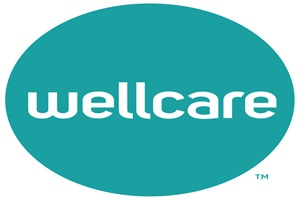A GUIDE TO PRIVATE HEALTH INSURANCE: UNDERSTANDING, CHOOSING, AND PLANNING
I. Introduction to Private Health Insurance
Private health insurance refers to insurance coverage that individuals or groups purchase from private insurance companies to help cover medical expenses. Its primary purpose is to provide financial protection against unexpected healthcare costs.
Private health insurance has its roots in early forms of insurance dating back to ancient civilizations. In the modern era, it became more prevalent in the early 20th century, particularly in the United States, as healthcare costs rose and employers began offering health insurance benefits to attract workers.
Importance in Healthcare System:
Private health insurance plays a significant role in supplementing public healthcare programs and providing access to a wider range of healthcare services. It offers individuals and families options for tailored coverage, flexibility in choosing healthcare providers, and additional benefits beyond what public programs may offer.
II. Types of Private Health Insurance
Employer-Sponsored Insurance:
Employer-sponsored insurance (ESI) refers to health insurance plans offered by employers to their employees as part of their employee benefits package. These plans often provide group coverage at discounted rates and may include contributions from both the employer and the employee.
Individual Health Insurance Plans:
Individual health insurance plans are purchased by individuals or families directly from insurance companies. These plans are suitable for those who do not have access to employer-sponsored coverage or government programs like Medicare or Medicaid.
Health Savings Accounts (HSAs):
HSAs are tax-advantaged savings accounts paired with high-deductible health plans (HDHPs). Contributions to HSAs are tax-deductible, and funds can be used to pay for qualified medical expenses. These accounts offer individuals greater control over their healthcare spending and the opportunity to save for future medical needs.
Short-Term Health Insurance:
Short-term health insurance provides temporary coverage for individuals in transition, such as those between jobs or waiting for other coverage to begin. These plans typically offer limited benefits and may not cover pre-existing conditions or preventive care services.
Medicare Advantage Plans:
Medicare Advantage plans, also known as Medicare Part C, are offered by private insurance companies as an alternative to traditional Medicare. These plans often include additional benefits like prescription drug coverage, vision, dental, and wellness programs, and may offer lower out-of-pocket costs for beneficiaries.
III. Key Features and Benefits of Private Health Insurance
Coverage Options:
Private health insurance plans offer a range of coverage options, including hospitalization, outpatient services, prescription drugs, mental health services, and preventive care.
Network Options (PPOs, HMOs, EPOs):
Private health insurance plans often utilize provider networks to manage costs and ensure quality of care. Common network types include Preferred Provider Organizations (PPOs), Health Maintenance Organizations (HMOs), and Exclusive Provider Organizations (EPOs), each with different rules regarding out-of-network coverage and referrals.
Premiums, Deductibles, and Copayments:
Premiums are the monthly payments individuals make to maintain their insurance coverage. Deductibles are the amount individuals must pay out of pocket before insurance coverage kicks in, while copayments are fixed amounts individuals pay for specific services or prescriptions.
Prescription Drug Coverage:
Many private health insurance plans offer prescription drug coverage, either as part of the standard benefits package or as an optional add-on. This coverage helps individuals afford necessary medications and can vary in terms of formulary restrictions and cost-sharing requirements.
Preventive Care Services:
Private health insurance plans often cover preventive care services at no additional cost to the insured. These services may include annual check-ups, screenings, vaccinations, and counseling services aimed at maintaining overall health and wellness.
Flexibility and Portability:
Private health insurance plans offer individuals and families flexibility in choosing coverage options that meet their specific needs and budgetary constraints. Additionally, individuals can often retain their coverage even if they change jobs or move to a different location.
IV. How Private Health Insurance Works
Enrollment Process:
Individuals can enroll in private health insurance plans during open enrollment periods or special enrollment periods triggered by qualifying life events such as marriage, birth of a child, or loss of other coverage.
Claims Process:
When individuals receive medical care covered by their insurance plan, healthcare providers submit claims to the insurance company for reimbursement. The insurance company reviews these claims and processes payments according to the terms of the policy.
Coverage Limitations and Exclusions:
Private health insurance plans often have limitations and exclusions regarding coverage for certain services, treatments, or pre-existing conditions. It’s essential for individuals to understand these limitations and exclusions before selecting a plan.
Renewal and Termination Policies:
Private health insurance plans typically have renewal policies that outline how coverage is renewed at the end of each policy period. Additionally, insurers may have the right to terminate coverage under certain circumstances, such as non-payment of premiums or fraudulent activity.
Appeals and Grievances:
Individuals have the right to appeal decisions made by their insurance company regarding coverage denials, claim denials, or disputes over payment. Most insurers have a formal appeals process outlined in their policy documents.
V. Factors Influencing Private Health Insurance
Regulatory Environment:
Government regulations at the federal and state levels significantly impact the private health insurance market, including requirements for coverage, consumer protections, and market stability.
Economic Factors:
Economic factors such as healthcare costs, inflation, unemployment rates, and income levels influence the affordability and accessibility of private health insurance for individuals and families.
Technological Advancements:
Technological advancements in healthcare, such as telemedicine, electronic health records, and data analytics, are reshaping the private health insurance landscape by improving efficiency, expanding access to care, and reducing costs.
Demographic Trends:
Demographic trends, including population aging, changing family structures, and shifts in healthcare utilization patterns, impact the demand for private health insurance and the types of coverage individuals seek.
Public Perception and Consumer Behavior:
Public perception of private health insurance, as well as consumer preferences and behaviors related to healthcare decision-making, influence the competitiveness and evolution of the private insurance market.
VI. Challenges and Criticisms of Private Health Insurance
Affordability Issues:
Rising healthcare costs and premiums can make private health insurance unaffordable for many individuals and families, leading to gaps in coverage and financial hardship.
Coverage Gaps and Denials:
Coverage gaps and denials of coverage, particularly for pre-existing conditions or certain treatments, can leave individuals underinsured and unable to access necessary medical care.
Administrative Complexity:
The administrative complexity of private health insurance, including paperwork, billing processes, and navigating provider networks, can be confusing and time-consuming for consumers and healthcare providers alike.
Risk Selection and Adverse Selection:
Private insurers face challenges related to risk selection and adverse selection, as healthier individuals may opt for less comprehensive coverage or choose to go uninsured, leaving the insurance pool with a higher proportion of sicker individuals.
Lack of Transparency:
Lack of transparency regarding coverage terms, pricing, and quality metrics can make it difficult for consumers to make informed decisions when selecting private health insurance plans.
VII. Future Trends and Innovations in Private Health Insurance
Value-Based Care Models:
Value-based care models, which focus on improving health outcomes and controlling costs, are gaining traction within the private health insurance industry as insurers and providers shift towards more integrated and coordinated care delivery.
Telemedicine and Digital Health Integration:
Telemedicine and digital health technologies are increasingly being integrated into private health insurance plans, offering individuals greater access to virtual care options and remote monitoring services.
Personalized Health Plans:
Personalized health plans that leverage data analytics and predictive modeling are emerging to offer individuals customized coverage options and wellness programs tailored to their specific health needs and preferences.
Enhanced Data Analytics and Predictive Modeling:
Advances in data analytics and predictive modeling are enabling private insurers to better assess and manage risk, identify high-cost patients, and implement targeted interventions to improve health outcomes and reduce costs.
Regulatory Reforms and Policy Initiatives:
Ongoing regulatory reforms and policy initiatives aimed at improving healthcare affordability, expanding access to coverage, and promoting innovation will continue to shape the future of private health insurance.
VIII. Conclusion
Private health insurance plays a vital role in providing individuals and families with financial protection against healthcare costs and access to a wide range of healthcare services.
Private health insurance encompasses various types of coverage options, features, and benefits, as well as challenges and future trends that influence the industry.
As the healthcare landscape continues to evolve, policymakers, insurers, providers, and consumers must work together to address challenges, promote innovation, and ensure access to affordable, high-quality healthcare for all.a

